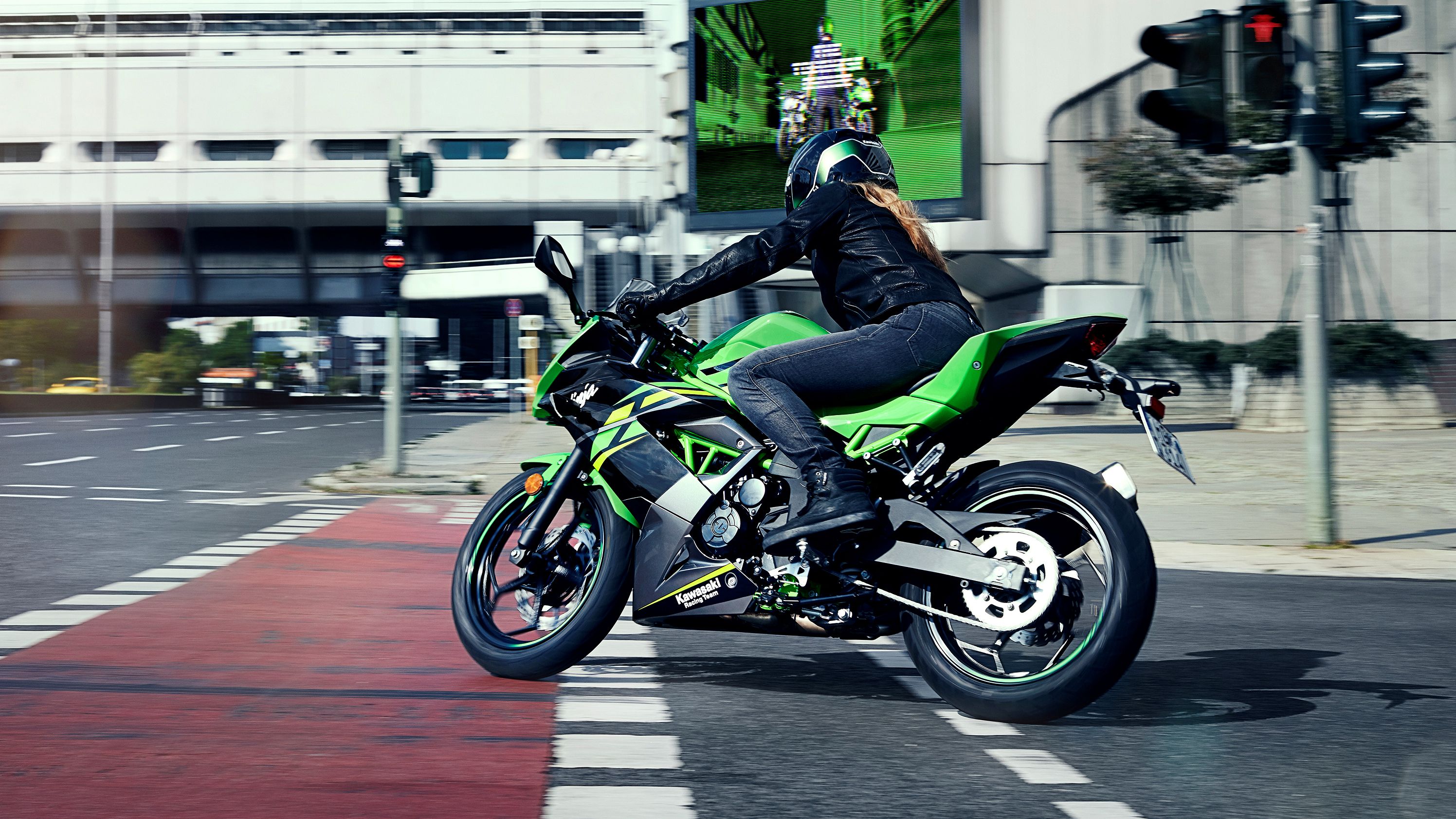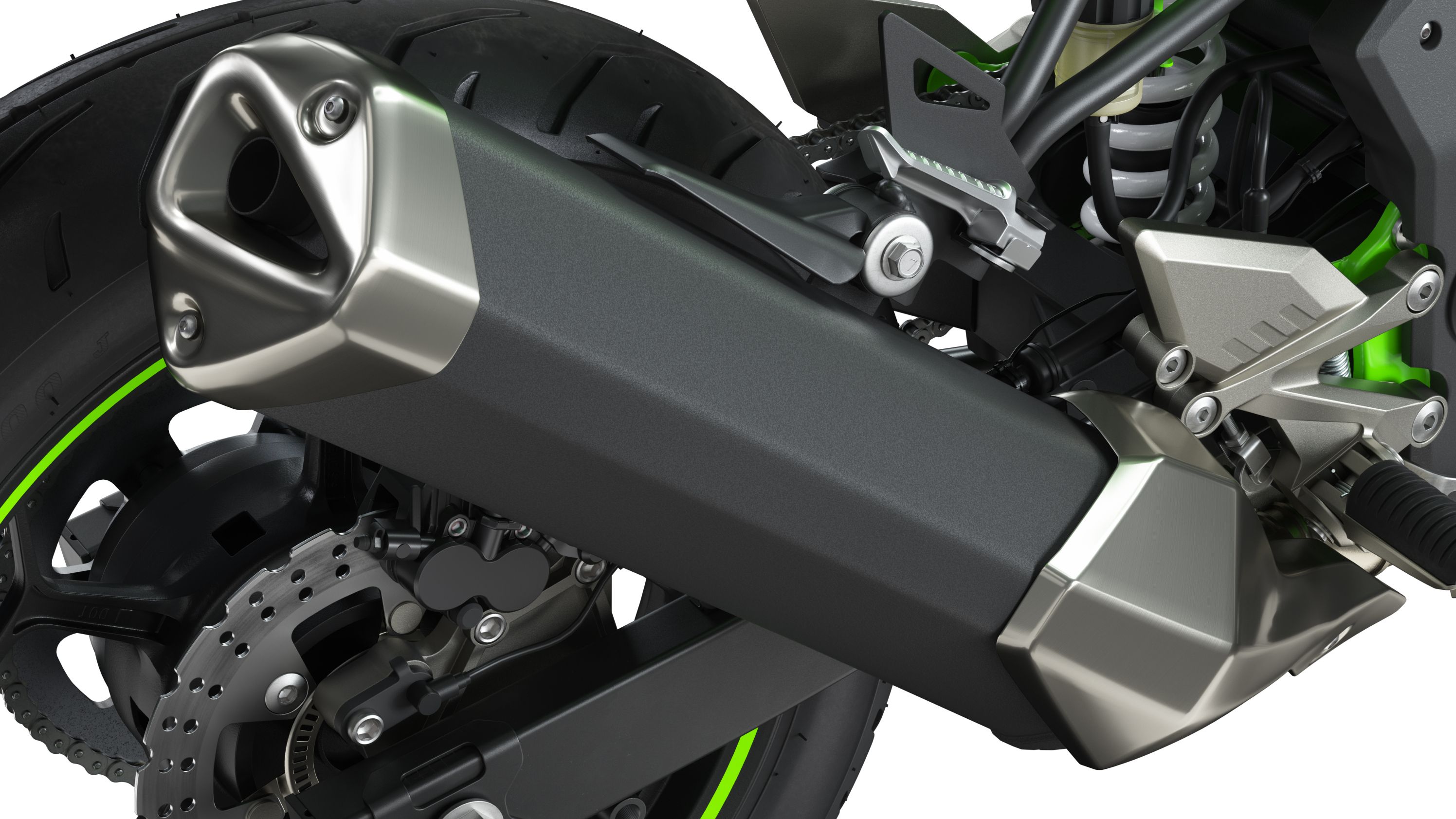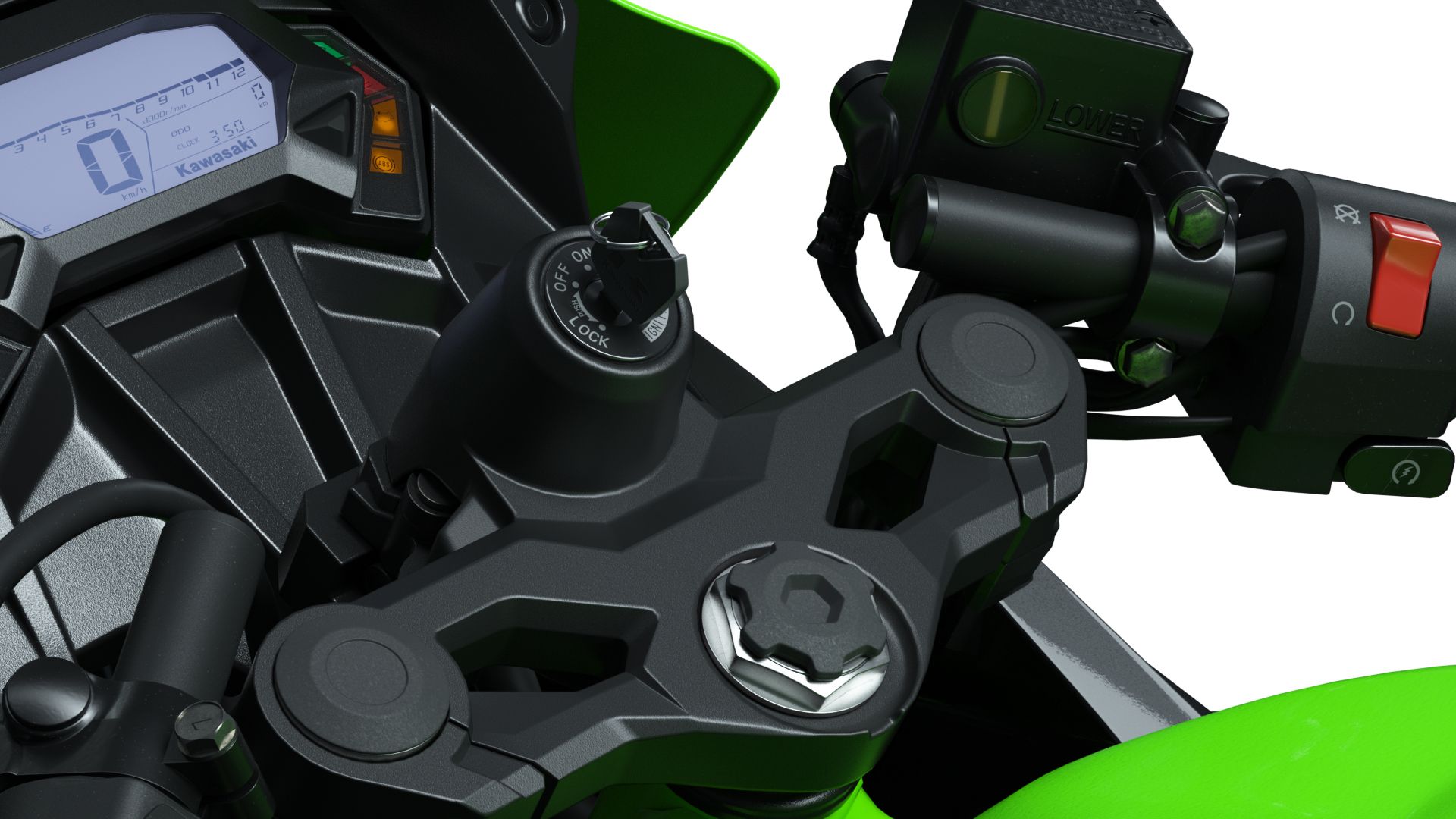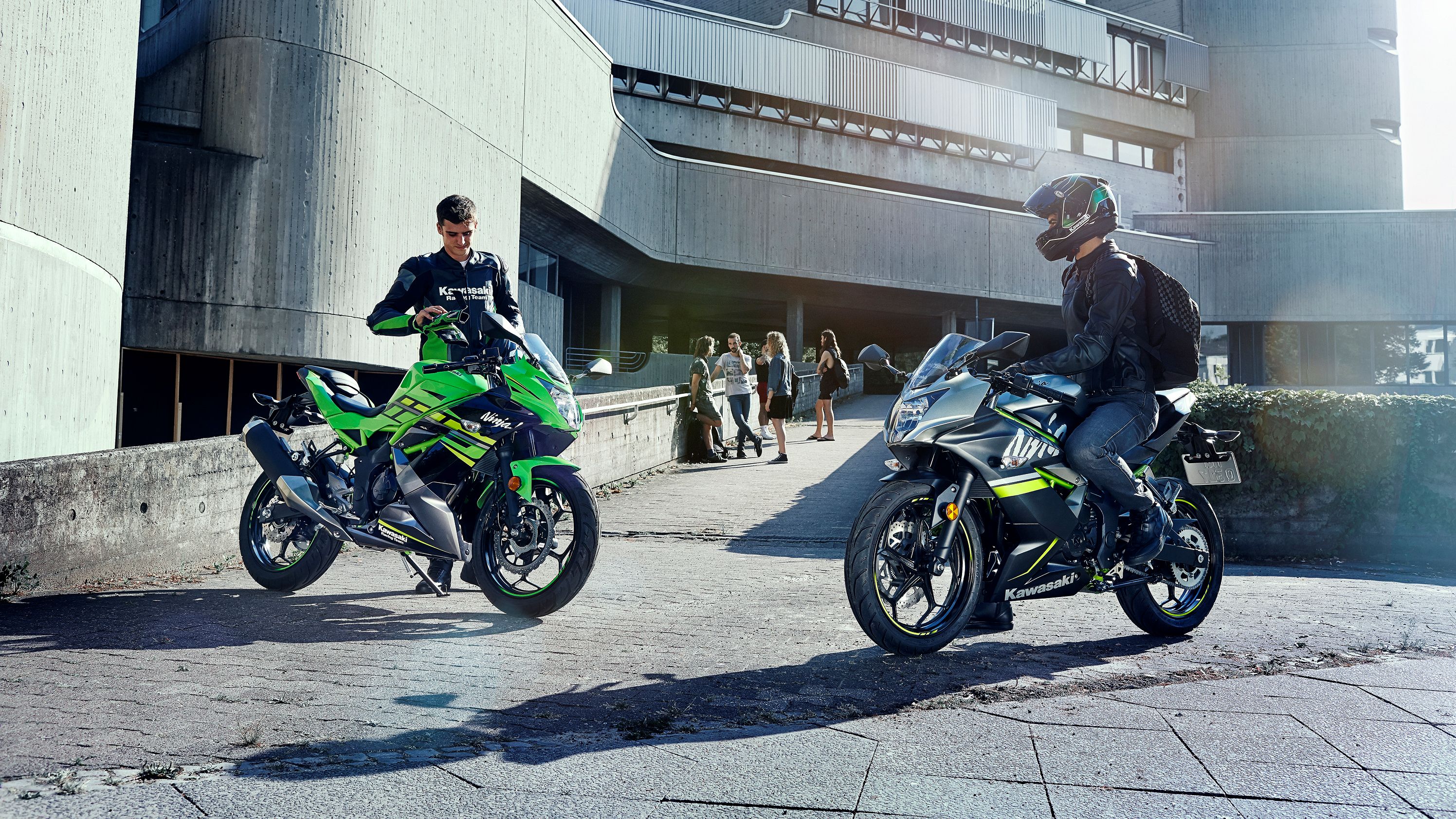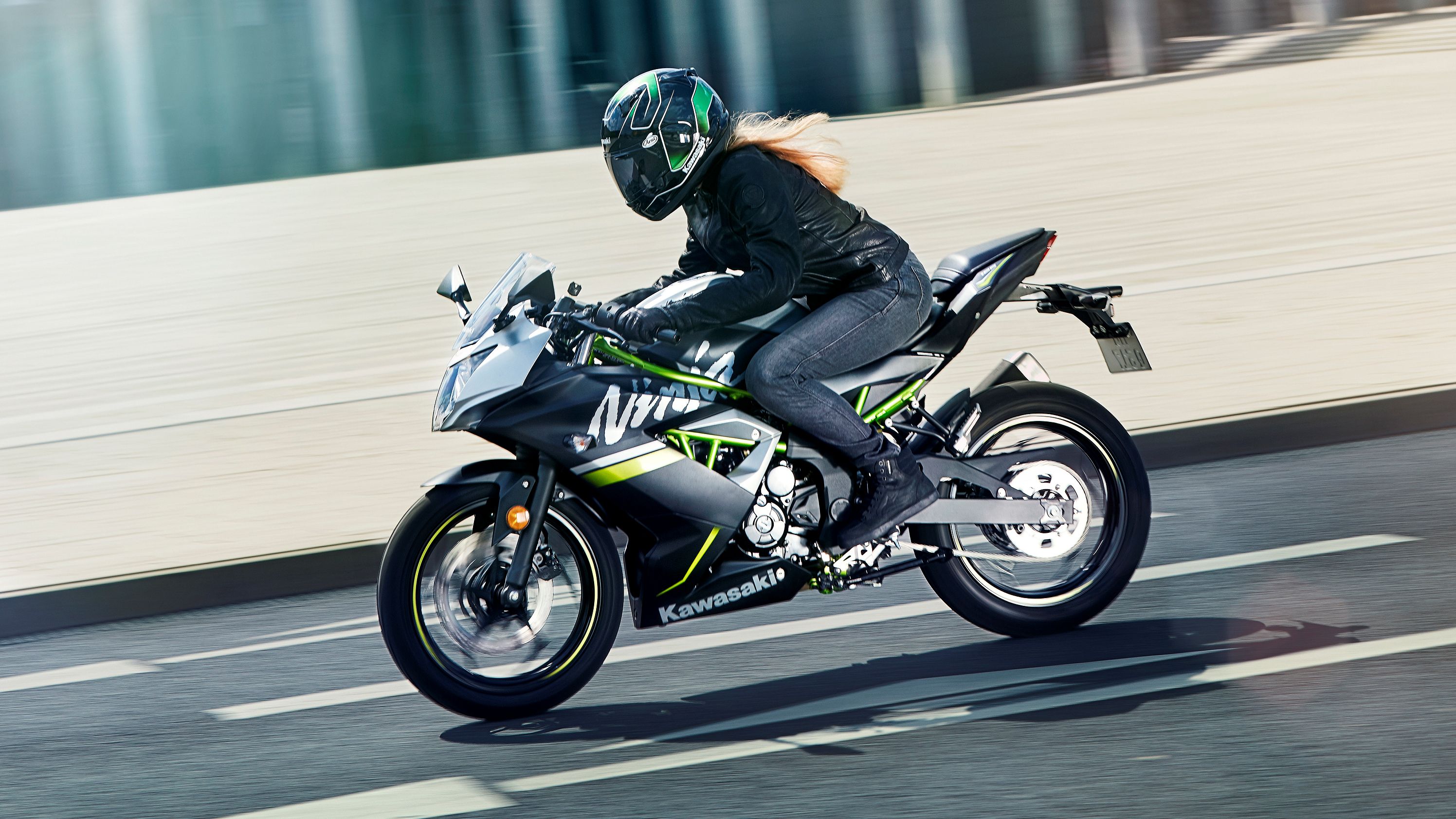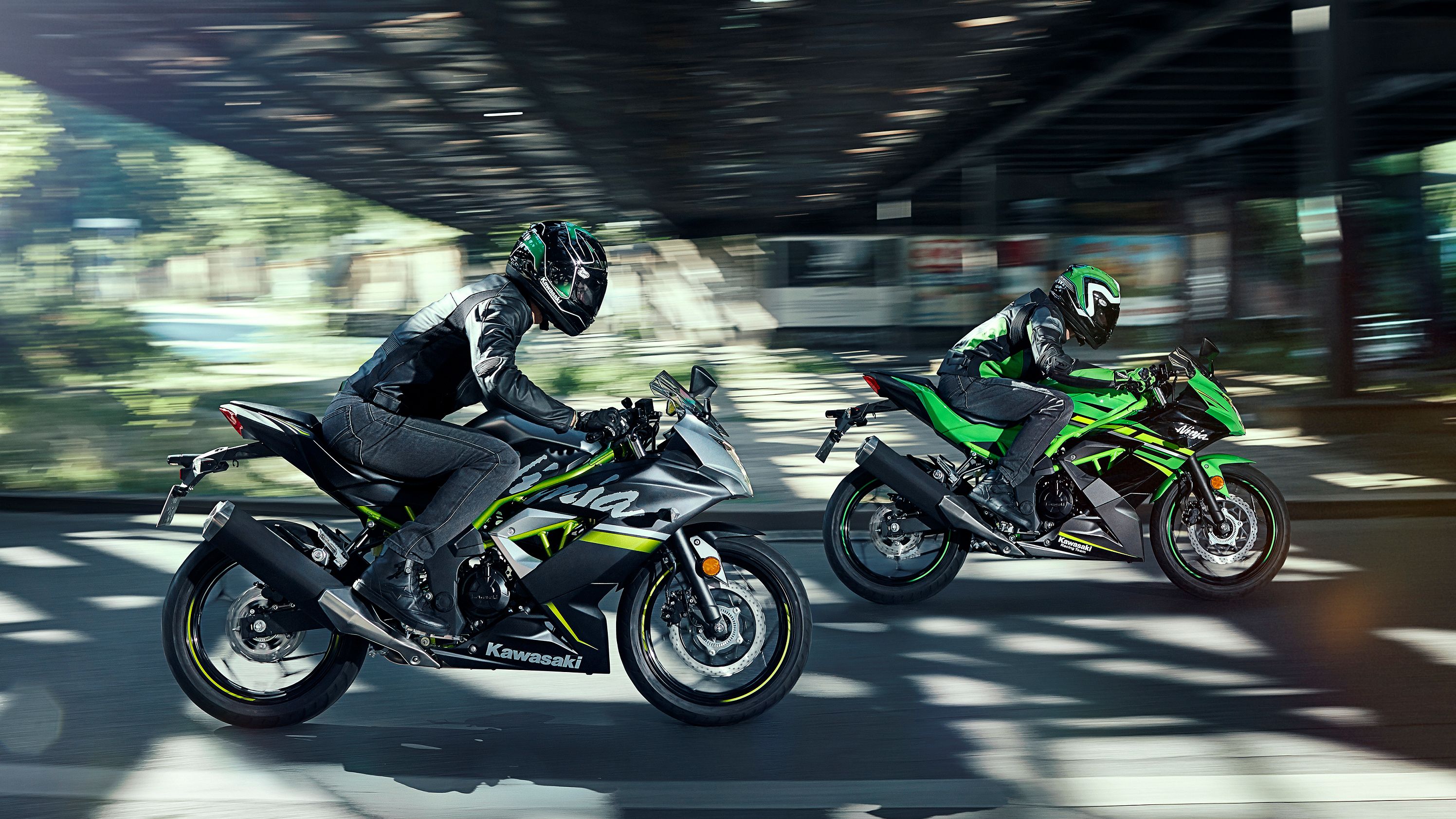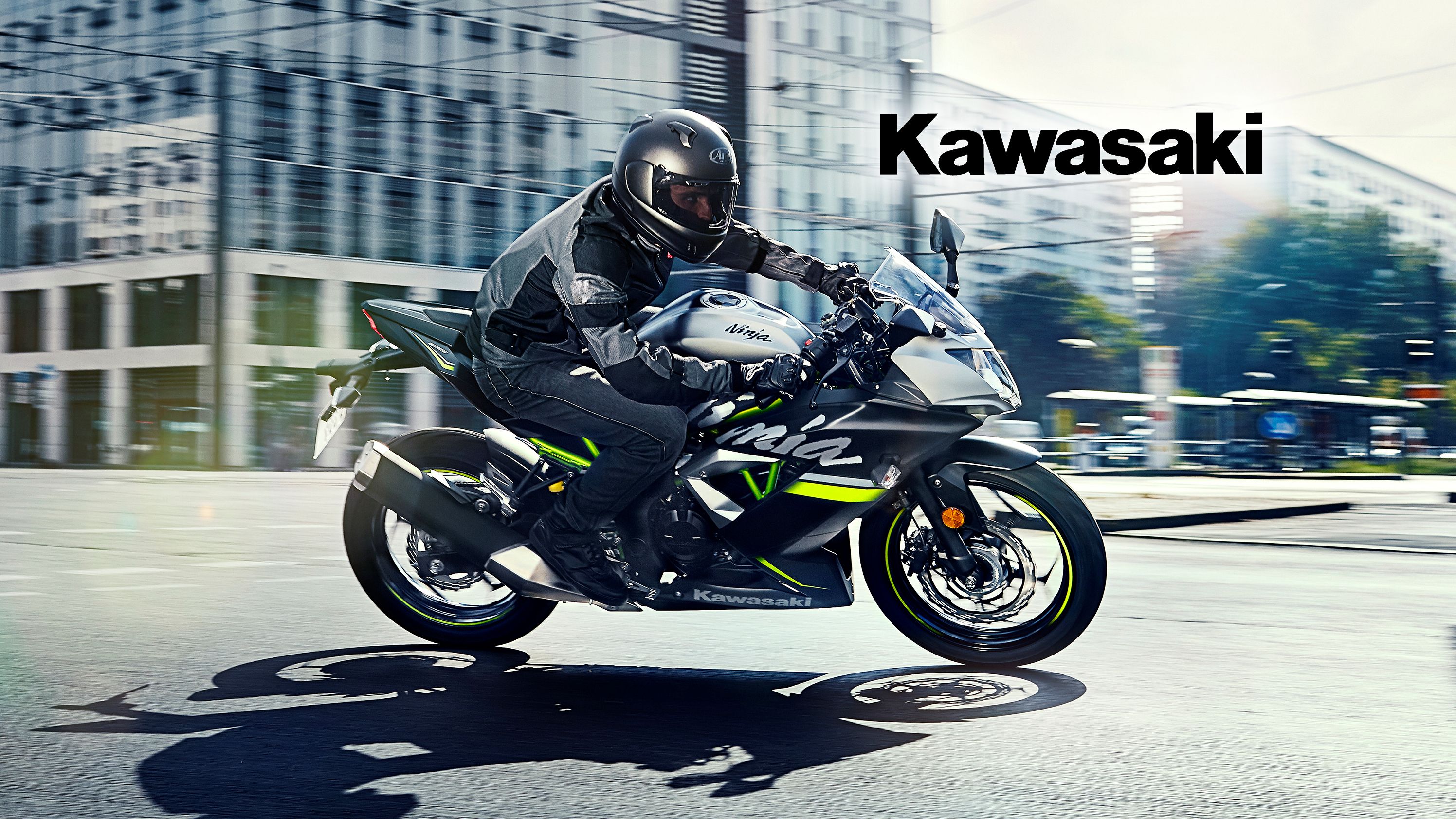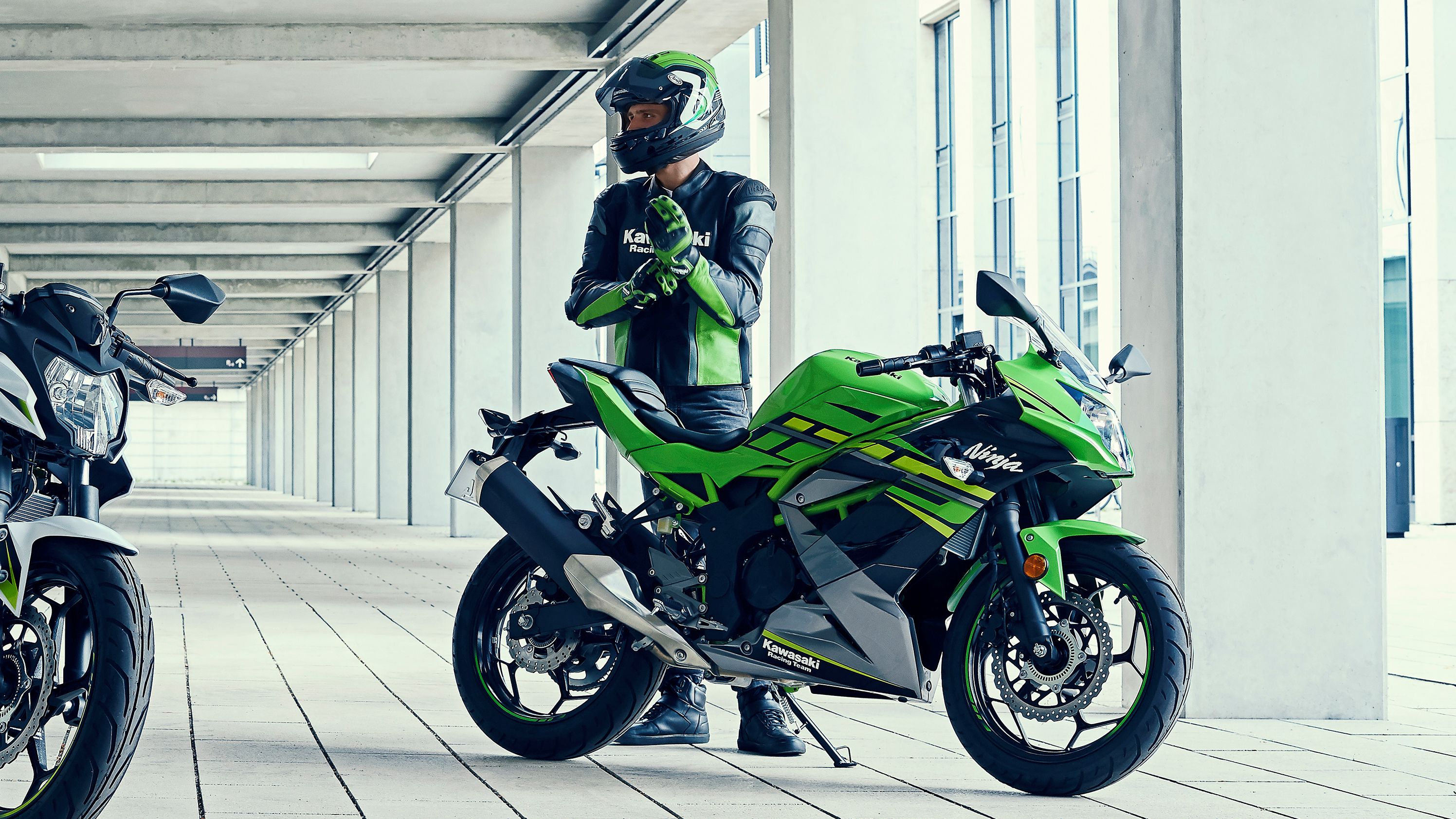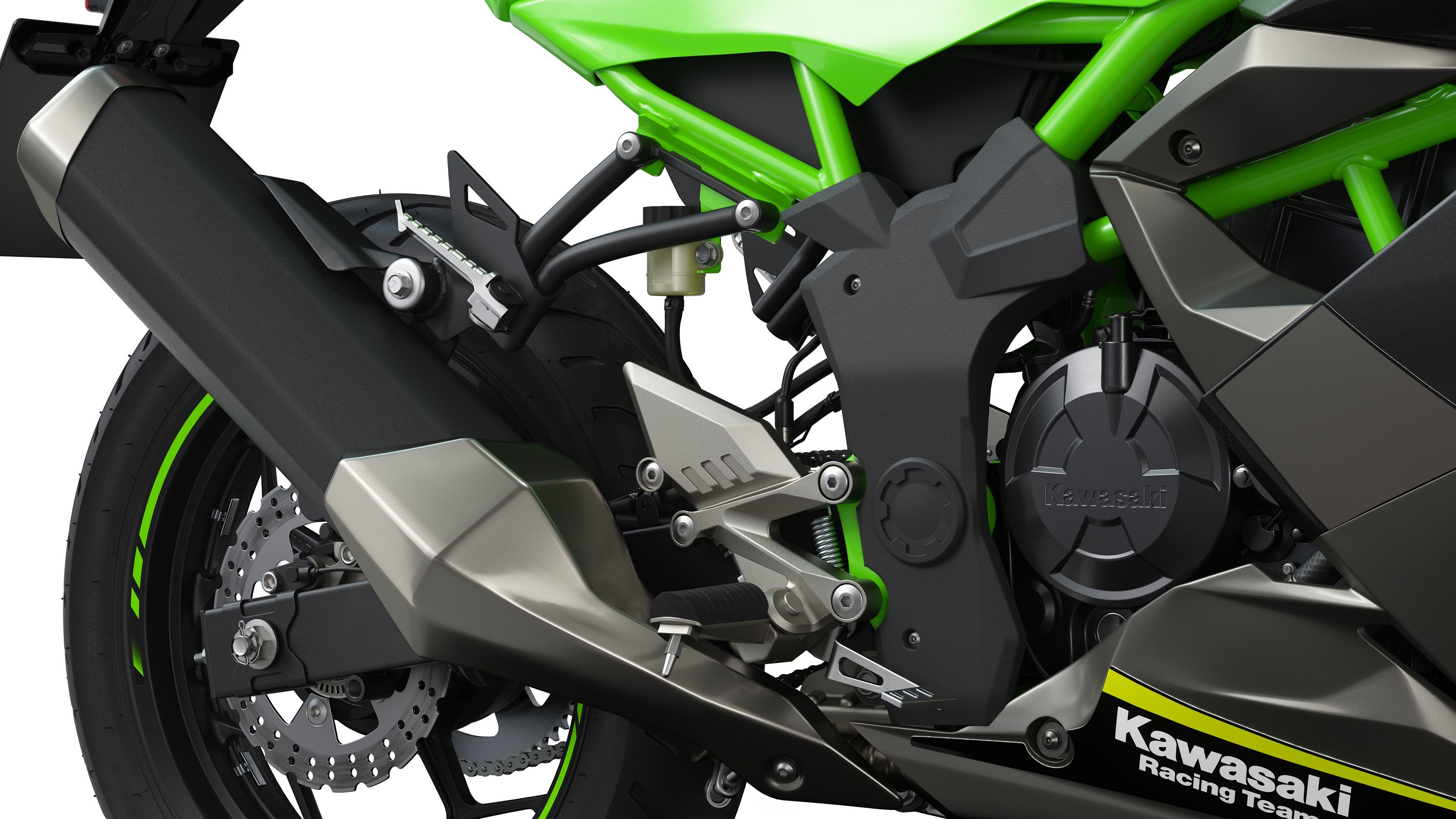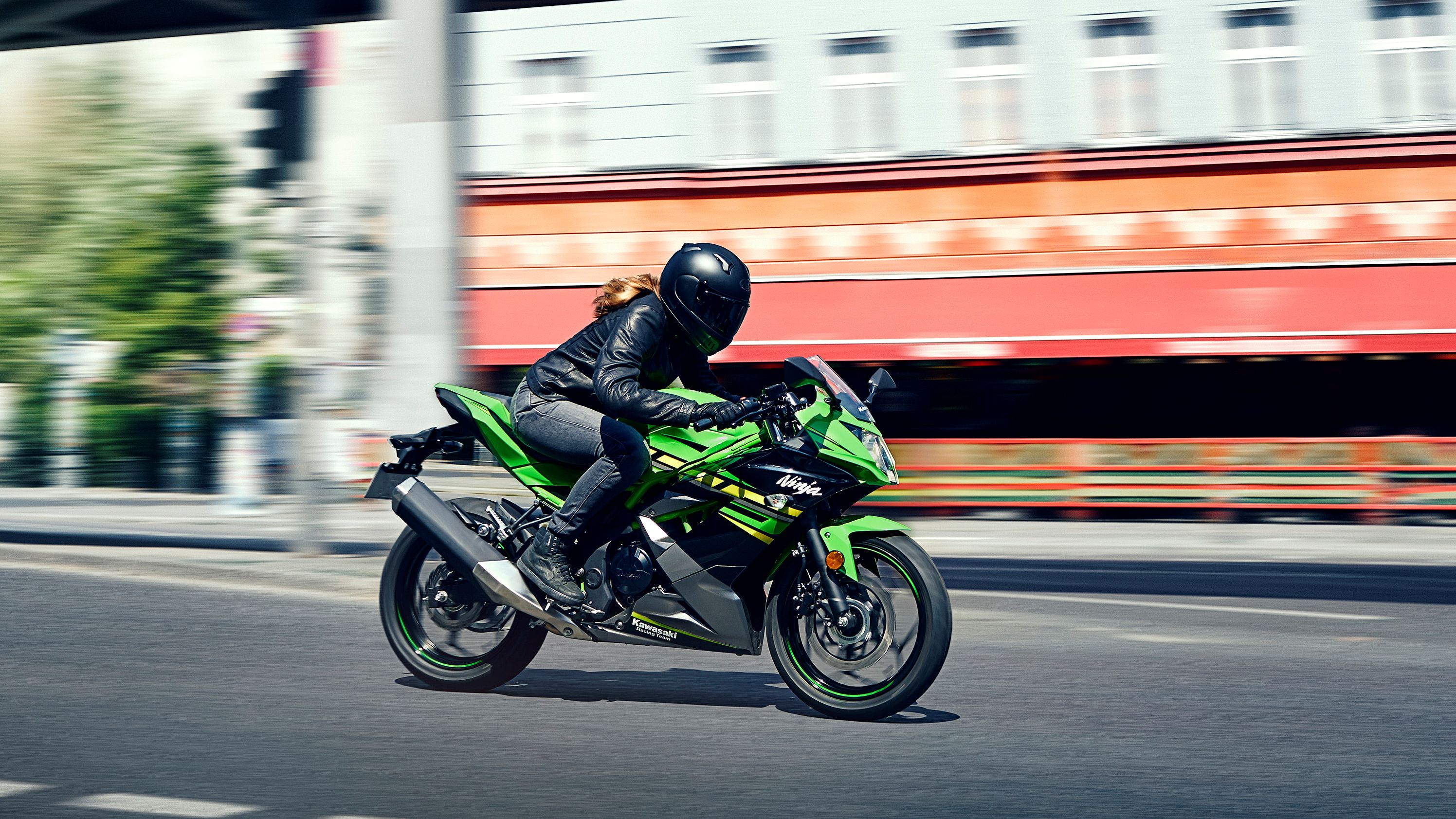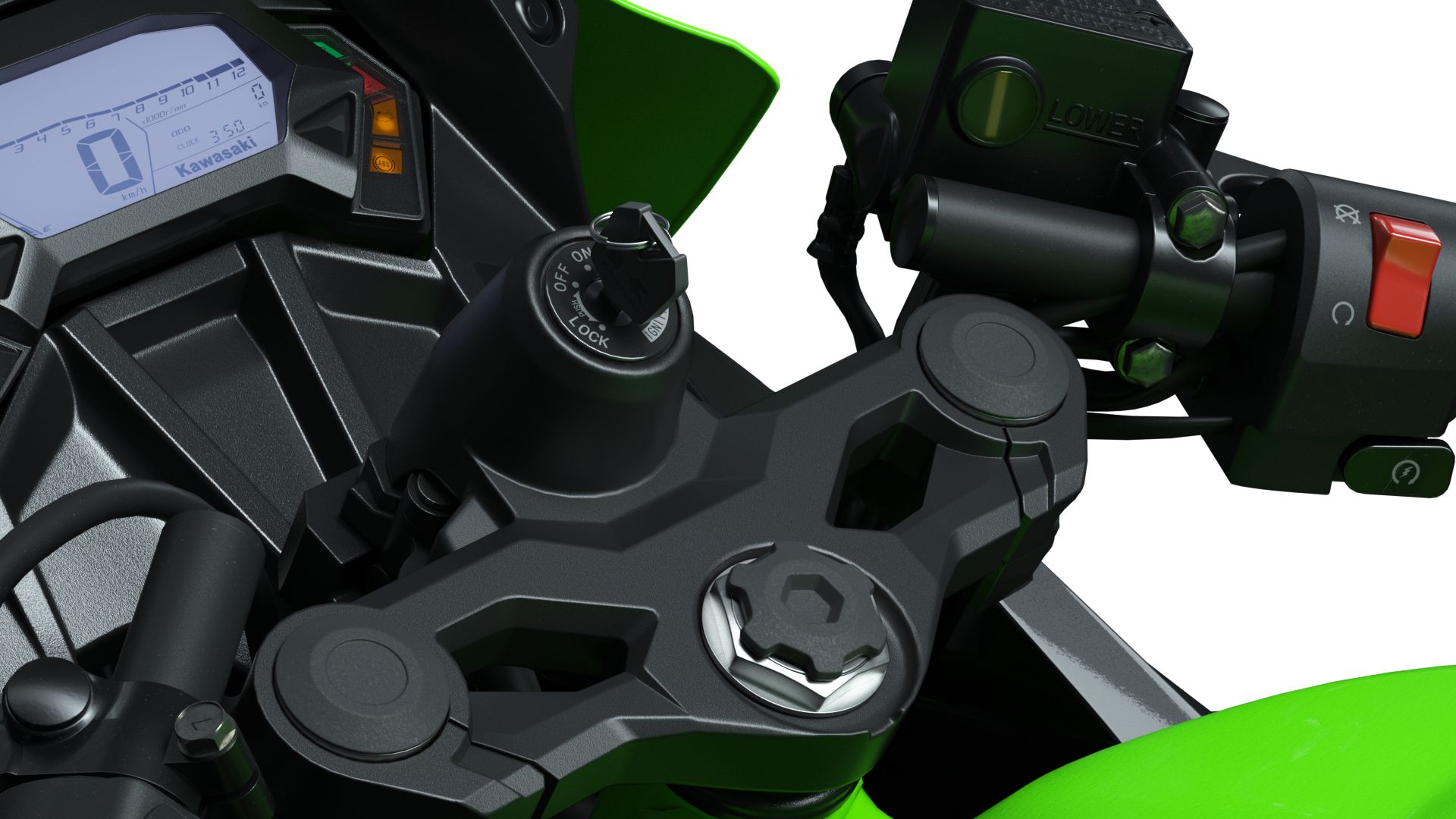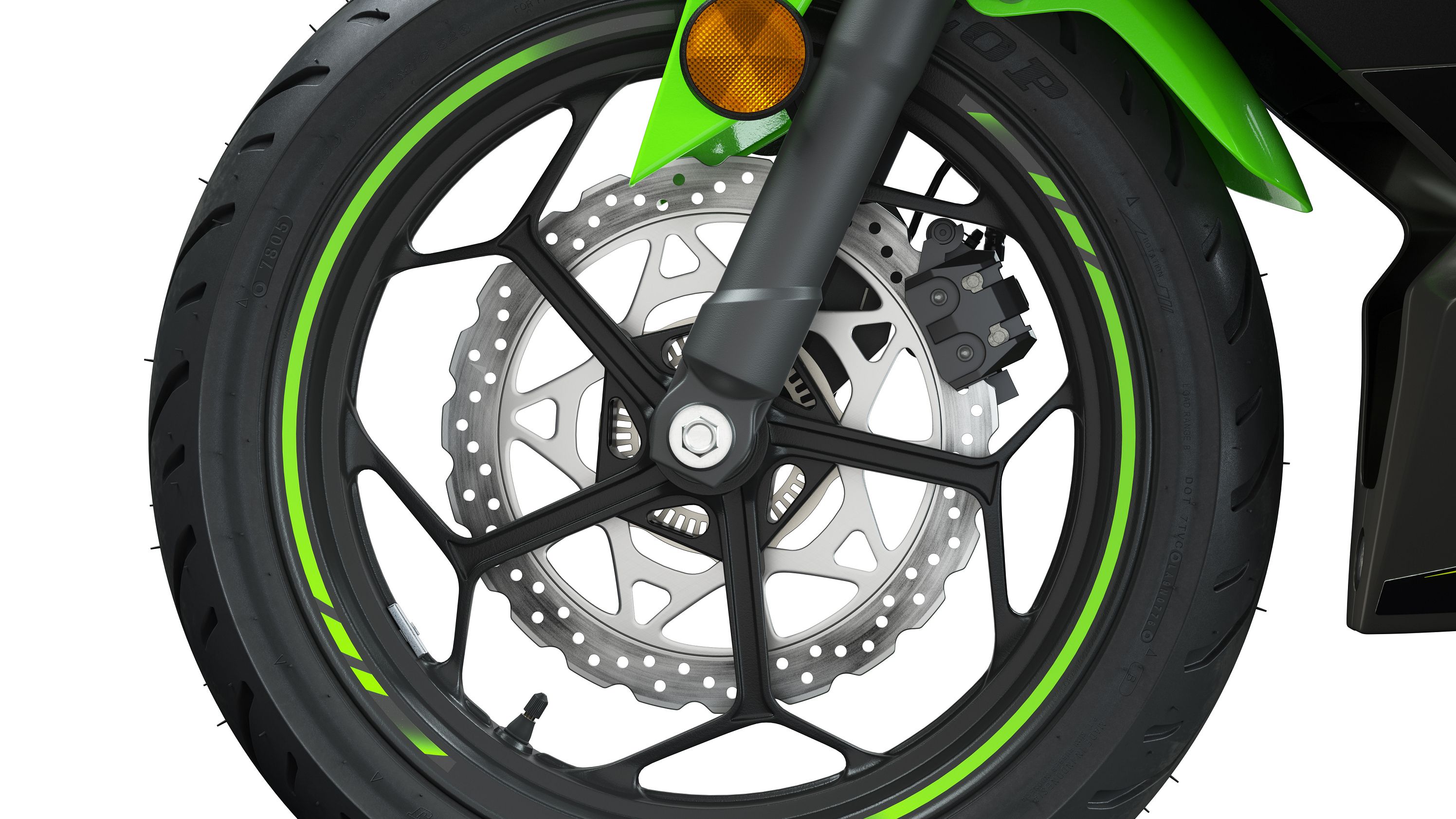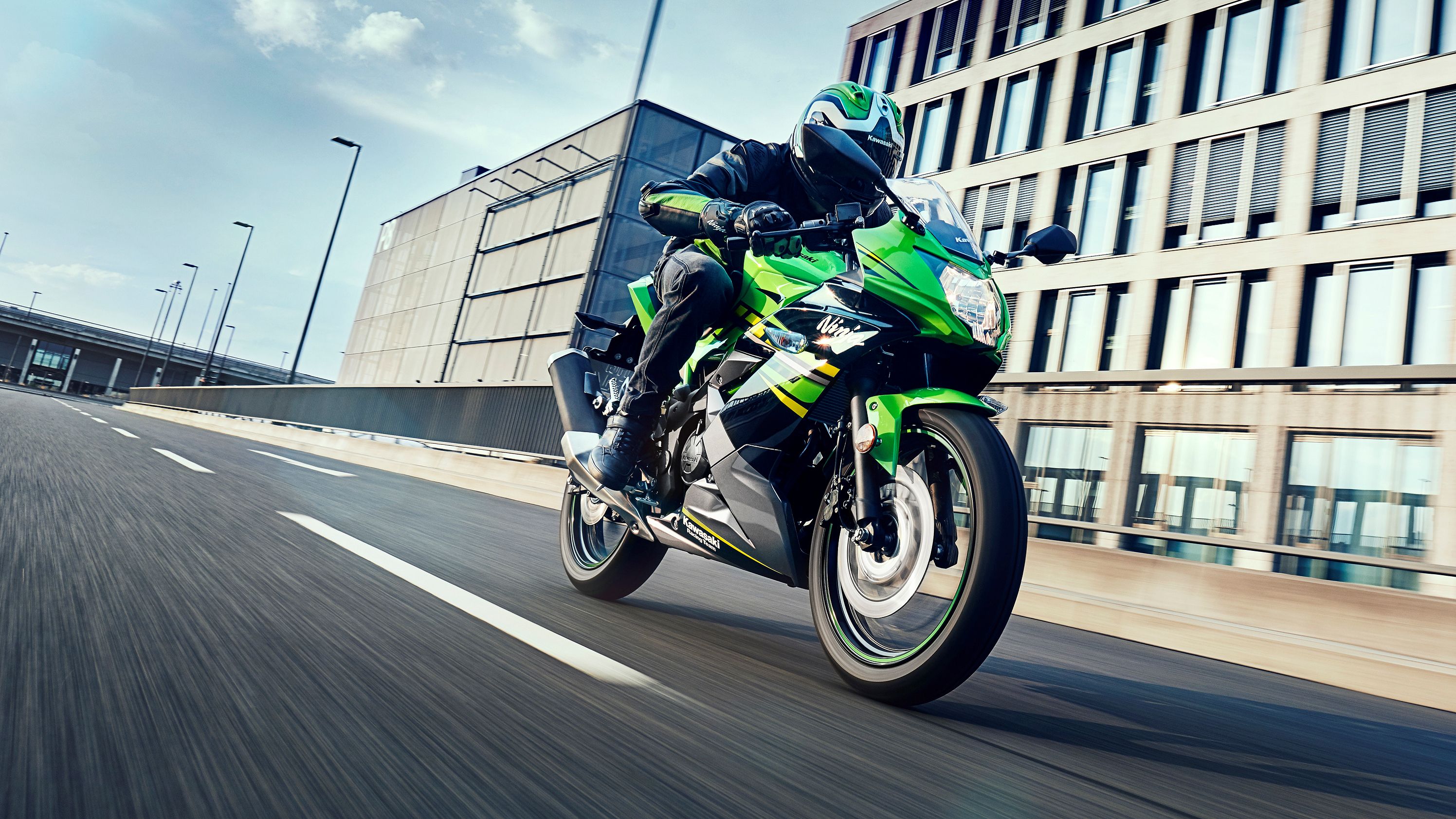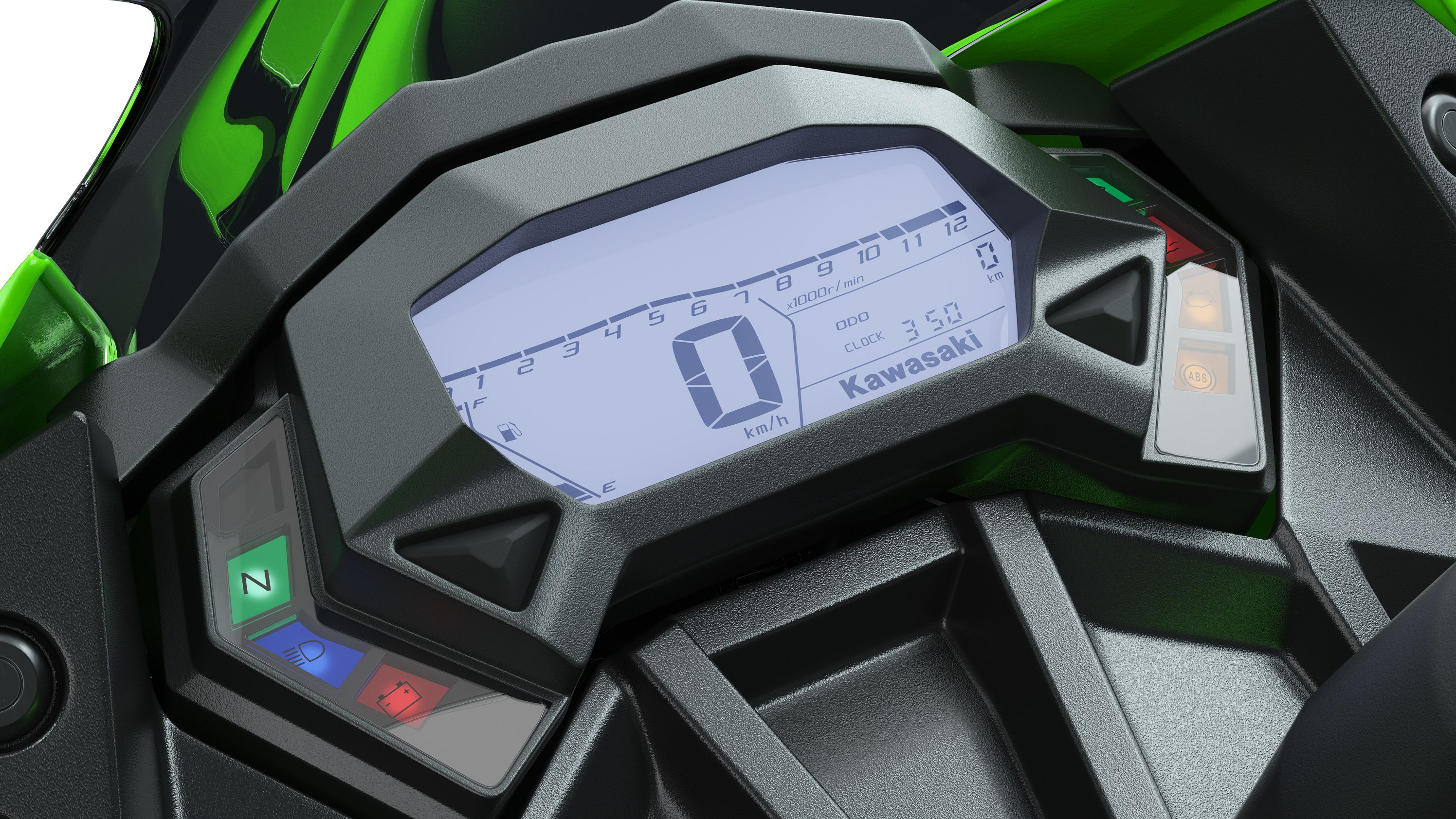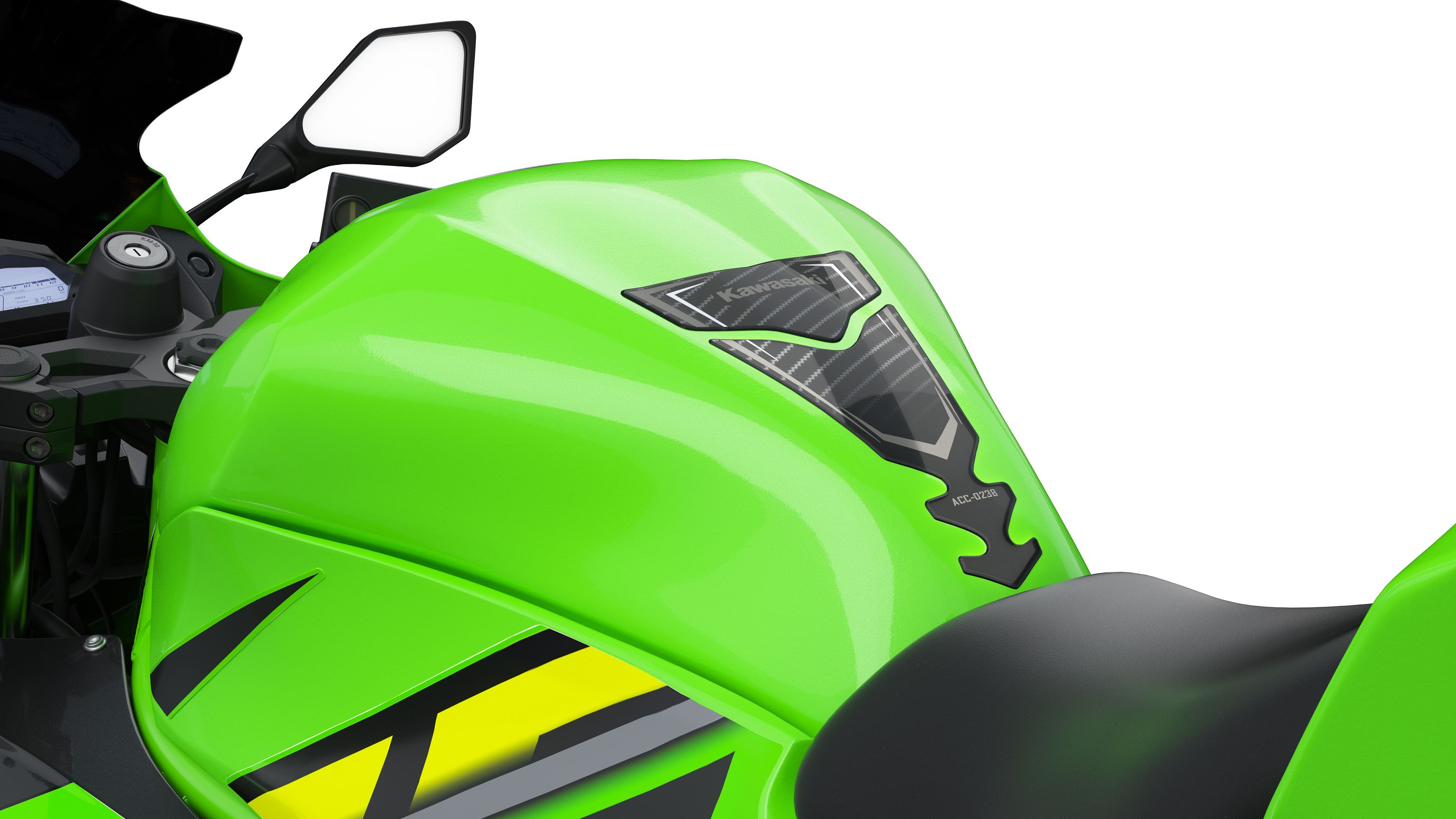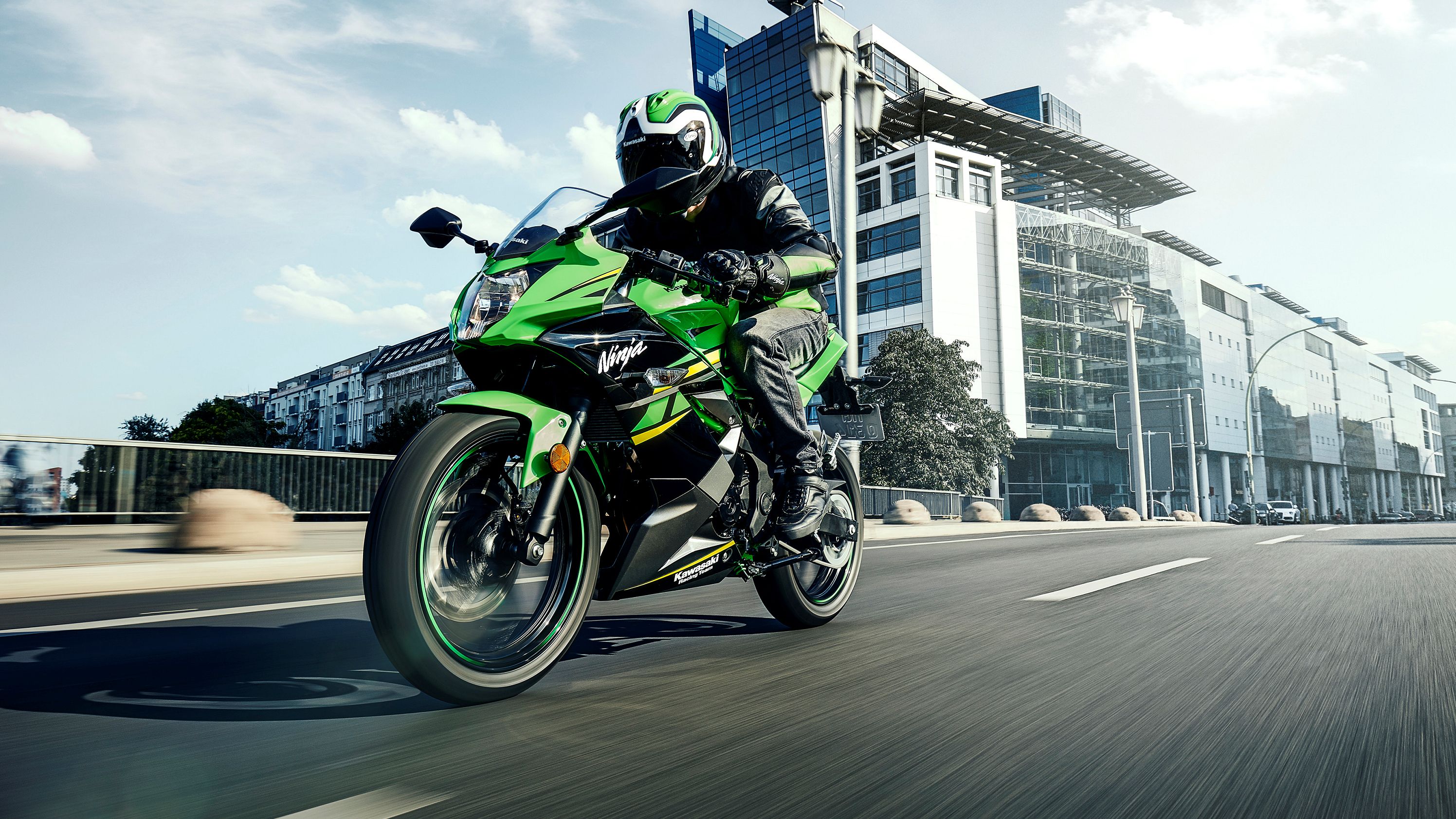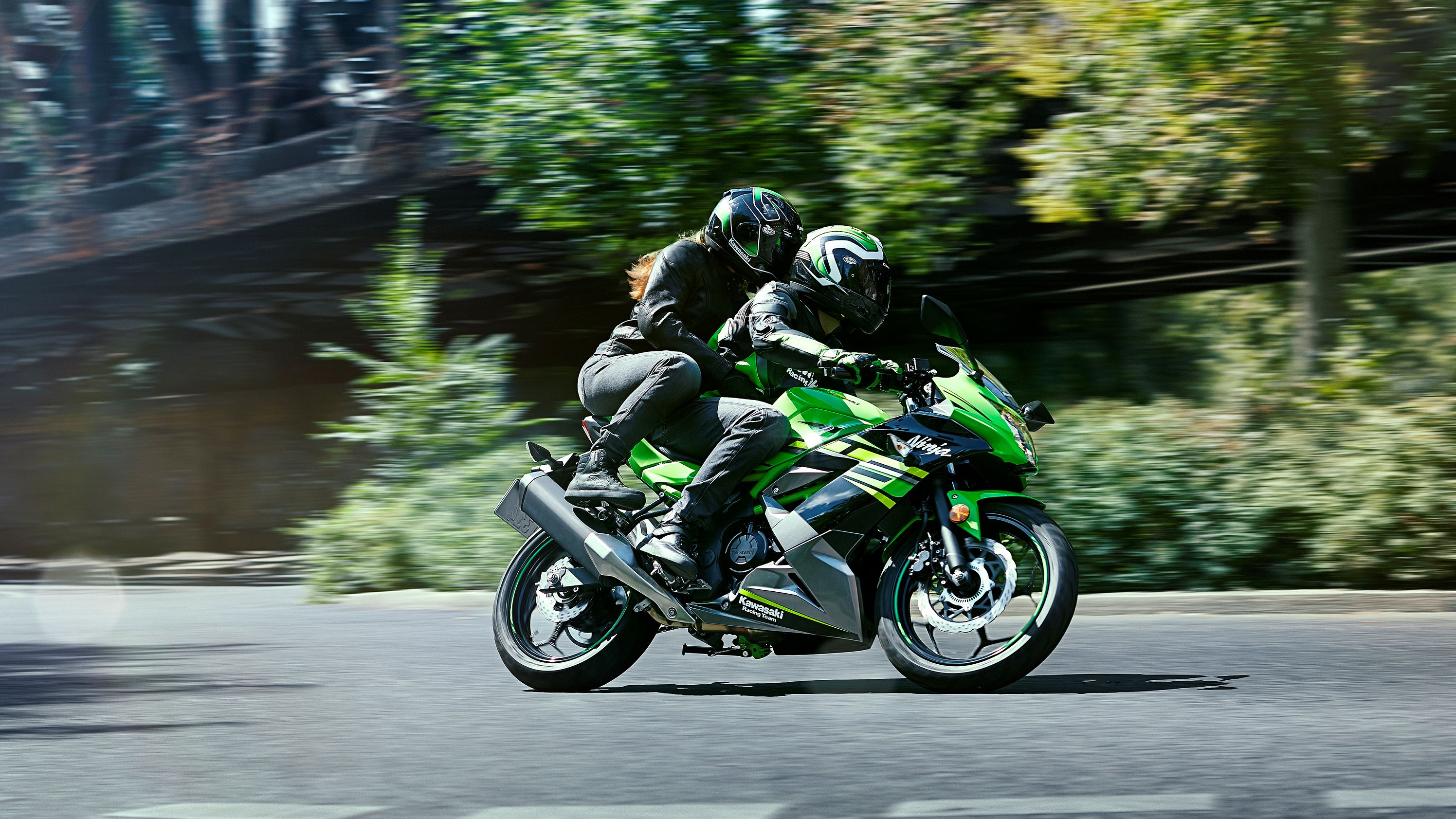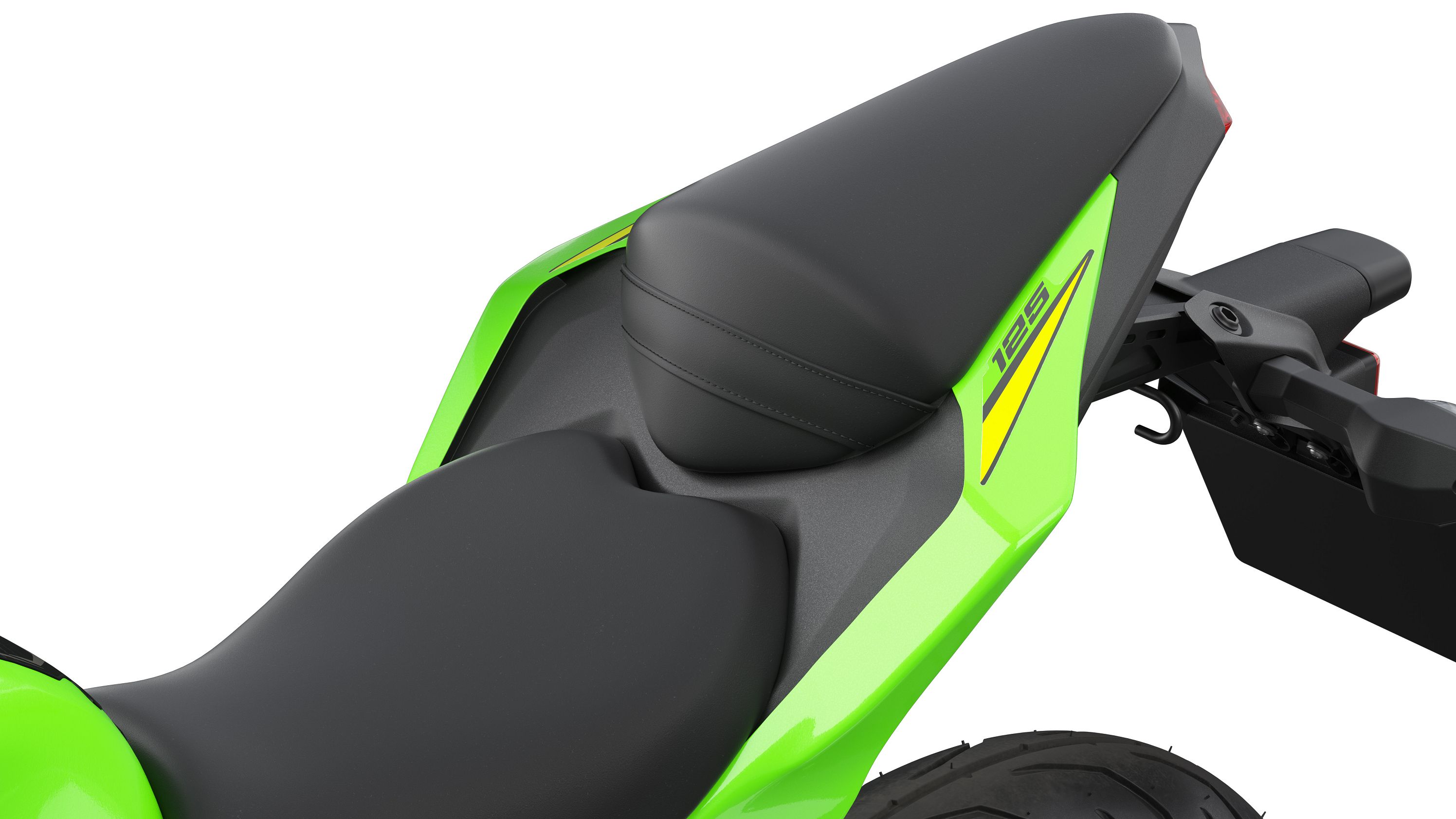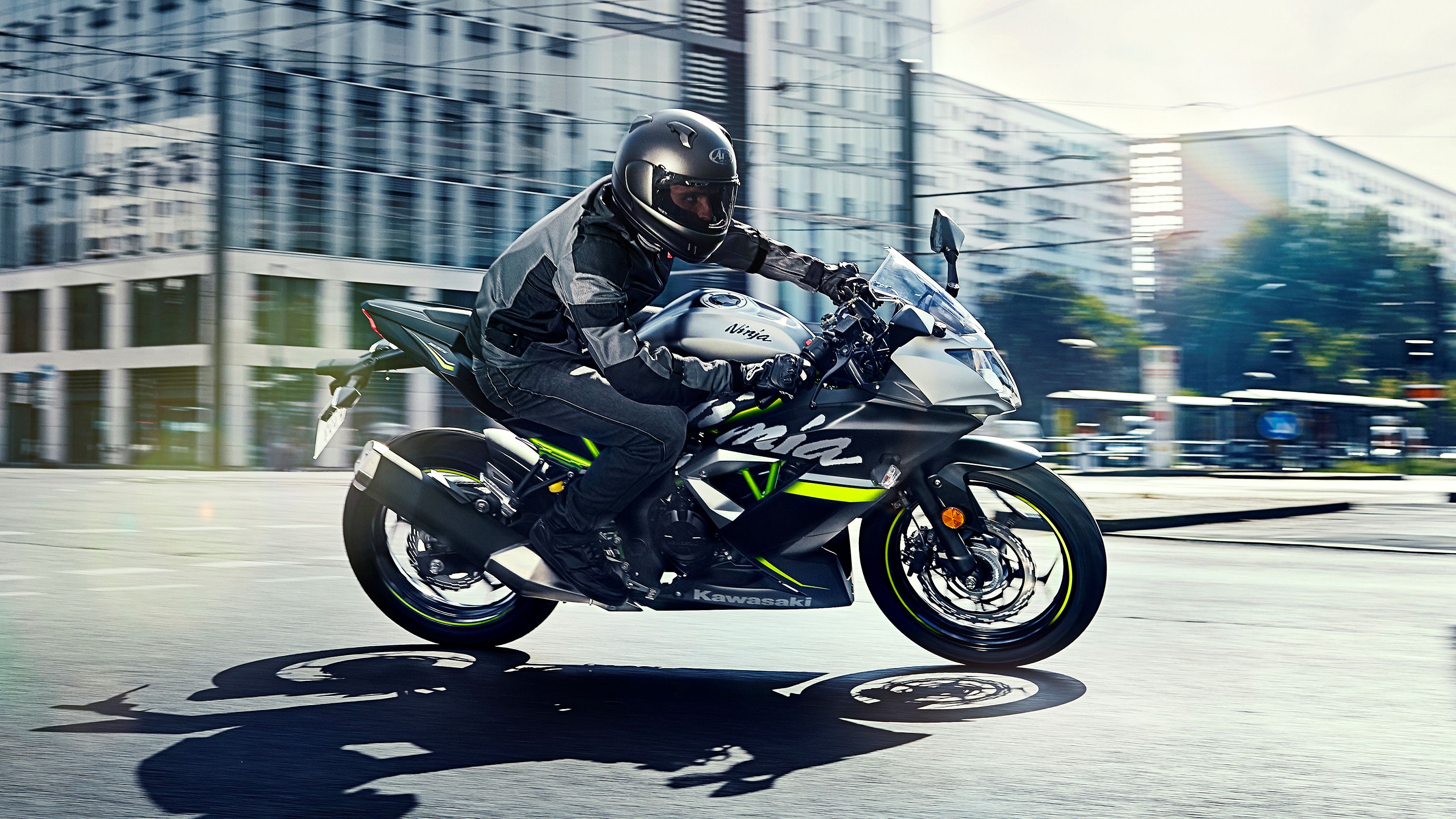Indoctrination is best started young, and Kawasaki shows that it agrees with that assertion with its new-for-2019 Ninja 125 targeting the youngest riders within the tiered licensing system favored by much of the EU and UK. The A1 bracket's restrictions are fairly severe, and it takes a special machine to balance the limited performance requirements against what it takes to make something actually fun to ride. Kawi's littlest Ninja brings the right blend of small-bike power and big-bike handling to the table to fit that bill, so today I want to check out this exciting new ride and see how it stacks up against the competition from some of the other big four.
Continue reading for my review of the Kawasaki Ninja 125.
2019 Kawasaki Ninja 125
- Make: Array
- Model: 2019 Kawasaki Ninja 125
- Engine/Motor: single cylinder
- [do not use] Vehicle Model: Array
2019 Kawasaki Ninja 125 Design
The factory endeavored to hit as many design high-points as possible, but at the end of the day was forced to make some compromises to deal with the fact that the Ninja 125 is an overall smaller machine than even the next Ninja uphill in the foodchain, the 250 or 300 version. A cyclops headlight splits the night, and that single beam clearly identifies the “125” since the rest of the range sports dual headlights.
Since the front fairing is fairly narrow, its look is necessarily a bit different though the windtunnel-tested impression still shines through with a small bubble-screen up top that creates a small pocket for the rider. You gotta' tuck in tightly to benefit from the protection, but the clip-on style bars encourage that with their aggressive bias that pulls the rider forward and down over the 11-liter fuel tank.
Instrumentation is concentrated in the single LED screen with idiot lights as a supplementary information source. The tank itself strikes a flyline very much like the bigger bikes with a wide flange up top that tapers down to a narrow waist to pull the rider's knees into the bike and out of the slipstream with room for body English, because what good is a trainer bike that you can't toss around in the corners, am I right? Too bad the front turn signals don't toe the family line with recessed housings, but instead are of the standoff sort. Not that it looks that bad, but it could look so much better.
Below the light, the fairing forms the genre-typical scoop and cowling with vents to draw off waste heat from the radiator and engine compartment to be smoothly reintegrated into the slipstream. The fuel tank tumbles down relatively abruptly to the 785 mm seat that, due to Kawasaki's Ergo-Fit system, can be elevated an additional 20 mm with an optional saddle for taller riders.
An upswept subframe section gives the 125 a slight nose-down/tail-up stance, and the tail section itself tapers down to a point with the taillight at the terminus that makes for a tidy look. A mudguard stands off from its mount below the tail to mount the rear turn signals and the license plate that doubles as a fender extension with a hugger over the rear wheel for an extra layer of fling control. All in all, what we have here is a very sporty ride that looks as it should, which is to say, much like the machines a 125 rider will likely graduate up to as they advance through the driver's license progression.
2019 Kawasaki Ninja 125 Chassis
Tubular-steel members make up the diamond-type Trellis frame that's all but hidden beneath the paneling with just a few tantalizing glimpses where it peeks out through the vents. The steering head holds the 37 mm, vanilla rwu front forks at 23.8-degrees with 90 mm of trail for a very eager demeanor in the corners. Additionally, the steering sweeps through a wide, 30-degree steering arc that turns in a 2.9-meter turning radius for nimble walking-speed maneuvers. Yeah, that's really nice when you don't have to make a K-turn or three every time you're forced to push the thing around a parking lot or the garage.
Out back, a Uni-Trak system uses a single, gas-charged coil-over shock for support with a 60 mm stroke and five-way preload adjuster that lets you dial in for changing passenger/cargo loads. Cast, 17-inch wheels round out the rolling chassis and toe the industry-standard line for the genre with a 100/80 and 130/70 on the front and rear, respectively.
At only 148 kg wet, the single, 263 mm petal disc and twin-piston front caliper are sufficient to manage the energy with another dual-pot anchor and 220 mm disc out back, and independent ABS protection all around as part of the standard equipment package. Do I think new riders can benefit from raw brakes? Sure, but since ABS is fairly ubiquitous nowadays, it's a fairly safe bet that subsequent bikes within the sport/supersport genre will also come with that tech, so why the heck not, right? I swear, riders have never had it better than they do at this point in two-wheel history.
|
Frame: |
Tube diamond |
|
Suspension, Front: |
ø37 mm telescopic fork |
|
Suspension, Rear: |
Uni Trak, gas-charged shock with adjustable preload |
|
Wheel travel: |
Front: 110 mm, Rear: 120 mm |
|
Rake: |
23.8° |
|
Trail: |
90 mm |
|
Steering angle (left/right): |
30° / 30° |
|
Tire, Front: |
100/80-17M/C 52S |
|
Tire, Rear: |
130/70-17M/C 62S |
|
Brakes, Front: |
Single 290 mm petal disc, Dual-piston caliper |
|
Brakes, Rear: |
Single 220 mm petal disc, Dual-piston caliper |
2019 Kawasaki Ninja 125 Drivetrain
The new Ninja thumper is what really makes the whole package what it is. It features a single, 58 mm bore and 47.2 mm stroke cylinder that lands at 125 cc on the nose with an 11.7-to-1 compression ratio calling for top-octane pump champagne. Dual over-head cams time the valvetrain that runs with a total of four poppets to control flow and a shim-under valve adjustment that is really a trade off between convenience and weight. Electronic fuel injection meters the dino-juice, and a 28 mm throttle body manages the induction.
In order to save some weight, the aluminum cylinder has an electro-fused coating that protects the bore in lieu of a heavy ferrous sleeve, and that comes with the added benefit of great thermal conductivity to aid in the removal of waste heat. One-lungers, by their very nature, are capable of rattling the filling right out of your head, but Kawi tackles that with a gear-driver counter-balancer that tames the worst of the vibrations. Good thing too, 'cause this is a high-revving mill that produces top power at 10,000 rpm with 11 kW on tap, and 11.7 Nm of torque at 7,700 rpm.
As with most A1 rides, it's got plenty of top-end for toodling around town and down country roads, but motorway work will be a dicey proposition since once you get it wound up to speed, you'll have very little power reserve to call upon, just like every other A1 ride out there. A six-speed transmission keeps you in the usable powerband with a standard clutch to couple it to engine power and a tough chain drive to carry power to the rear wheel.
|
Engine: |
Liquid-cooled, 4-stroke, Single cylinder, DOHC, 4 valves |
|
Bore x Stroke: |
58.0 x 47.2 mm |
|
Displacement: |
125 cc |
|
Compression ratio: |
11.7:1 |
|
Max. power: |
11.0 kW (15 PS) @ 10,000 rpm |
|
Max. torque: |
11.7 Nm (1.2 kgƒ·m) @ 7,700 rpm |
|
Ignition: |
Digital |
|
Lubrication: |
Forced lubrication, wet sump |
|
Fuel supply: |
Fuel injection (ø28 x 1) |
|
Starting system: |
Electric |
|
Final Drive: |
Chain |
|
Clutch: |
Wet multi-disc, manual |
|
Transmission: |
6-speed, return |
2019 Kawasaki Ninja 125 Pricing
As of this writing, the price is still an unknown quantity, but I expect it'll be somewhere in the neighborhood of the Z125 Pro that goes for $3,199, however that works out converted to euros or pounds. We do know it will be offered in a variety of color packages. There's a Lime Green/Ebony/Metallic Graphite Gray “Special Edition” model, a Metallic Flat Spark Black/Metallic Matte Fusion Silver and a Candy Plasma Blue/Metallic Flat Spark Black (my fave) from which to choose.
|
Colors: |
Lime Green / Ebony / Metallic Graphite Gray, Metallic Flat Spark Black / Metallic Matte Fusion Silver, Candy Plasma Blue / Metallic Flat Spark Black |
|
Price: |
TBA |
2019 Kawasaki Ninja 125 Competitors
There's very little to choose between the various 125 cc learner bikes, if I'm honest. Each of the Big Four produces an A1-compliant bike in their own image, and everything from the visuals to the underpinnings and powerplants are very similar. With that in mind, I grabbed Yamaha's YZF-R125 for my head-to-head for its good looks and similar performance profile, so let's get to it.
First, it's readily apparent that the factory borrowed from its big-boy bikes for the design of its A1 trainer to give it a serious business air. It starts with the ram-air induction vent that rides between the headlights and makes use of the pressurized air at the front of the bike. The Tuning Fork Company also opts for stiff, inverted front forks that also give the front end a racebike bent that's hard to ignore. They're just as non-adjustable as the Ninja's stems, but they do impart a race-tastic look and are undoubtedly stiffer and more resistant to torsional forces.
The “R125” has more-or-less the same brake power, with a single 297 mm disc up front, plus Yamaha gives you a choice between an ABS and a non-ABS version, so you can take it or leave it as you please.
A moderately high-compression thumper drives the Yamaha, and it falls just a fraction of a cubic-centimeter short of the Kawi with a 124.7 cc total displacement. Power clocks in with the same 11 Kw across the board, but Yamaha manages to wring an additional 0.7 Nm out of its mill for 12.4 Nm of torque against Kawasaki's 11.7 Nm.
Since the prices are still up in the air, I can't comment on that yet, but in this game of inches I fully expect the final tally to fall relatively close to one another. We'll see soon enough.
He Said
“I'm digging it, though I'm hard pressed to choose it over any of the competition at this point. Maybe price will be the deciding factor in the end? We'll see, but I have my doubts. To be fair, the restrictions of the A1 bracket cause something of a brand bottleneck and forces a certain homogeneity across the board. Which seems to indicate to me that although these are meant to draw riders into the brand, a certain amount of brand interest, if not actual loyalty, will be the deciding factor for most. That and aesthetics.”
She Said
My wife and fellow motorcycle writer, Allyn Hinton, says, “I love this expanding 125 cc segment, both for the fun factor of riding a small-displacement bike balls-to-the-wall and as an attractive, unintimidating first bike for folks new to two wheels. As long as you don't have a high-speed motorway along your commute, this is the bike that could make your trip to work or the campus something to look forward to.”
2019 Kawasaki Ninja 125 Specifications
|
Engine & Drivetrain: |
|
|
Engine: |
Liquid-cooled, 4-stroke, Single cylinder, DOHC, 4 valves |
|
Bore x Stroke: |
58.0 x 47.2 mm |
|
Displacement: |
125 cc |
|
Compression ratio: |
11.7:1 |
|
Max. power: |
11.0 kW (15 PS) @ 10,000 rpm |
|
Max. torque: |
11.7 Nm (1.2 kgƒ·m) @ 7,700 rpm |
|
Ignition: |
Digital |
|
Lubrication: |
Forced lubrication, wet sump |
|
Fuel supply: |
Fuel injection (ø28 x 1) |
|
Starting system: |
Electric |
|
Final Drive: |
Chain |
|
Clutch: |
Wet multi-disc, manual |
|
Transmission: |
6-speed, return |
|
Gear ratios: |
1st: 2.833 (34/12), 2nd: 1.875 (30/16), 3rd: 1.444 (26/18), 4th: 1.208 (29/24), 5th: 1.056 (19/18), 6th: 0.962 (25/26) |
|
Primary reduction ratio: |
2.966 (86/29) |
|
Final reduction ratio: |
3.500 (56/16) |
|
Chassis: |
|
|
Frame: |
Tube diamond |
|
Suspension, Front: |
ø37 mm telescopic fork |
|
Suspension, Rear: |
Uni Trak, gas-charged shock with adjustable preload |
|
Wheel travel: |
Front: 110 mm, Rear: 120 mm |
|
Rake: |
23.8° |
|
Trail: |
90 mm |
|
Steering angle (left/right): |
30° / 30° |
|
Tire, Front: |
100/80-17M/C 52S |
|
Tire, Rear: |
130/70-17M/C 62S |
|
Brakes, Front: |
Single 290 mm petal disc, Dual-piston caliper |
|
Brakes, Rear: |
Single 220 mm petal disc, Dual-piston caliper |
|
Dimensions & Capacities: |
|
|
Overall length: |
1,935 mm |
|
Overall width: |
685 mm |
|
Overall height: |
1,075 mm |
|
Wheelbase: |
170 mm |
|
Road clearance: |
1,330 mm |
|
Seat height: |
785 mm |
|
Curb mass: |
148 kg |
|
Fuel tank capacity: |
11 liters |
|
Details: |
|
|
Colors: |
Lime Green / Ebony / Metallic Graphite Gray, Metallic Flat Spark Black / Metallic Matte Fusion Silver, Candy Plasma Blue / Metallic Flat Spark Black |
|
Price: |
TBA |
Further Reading
Yamaha's YZF-R125
Read our review of the Yamaha YZF-R125.
Kawasaki Ninja 300
Read our review of the Kawasaki Ninja 300.
Kawasaki
Read more Kawasaki news.

